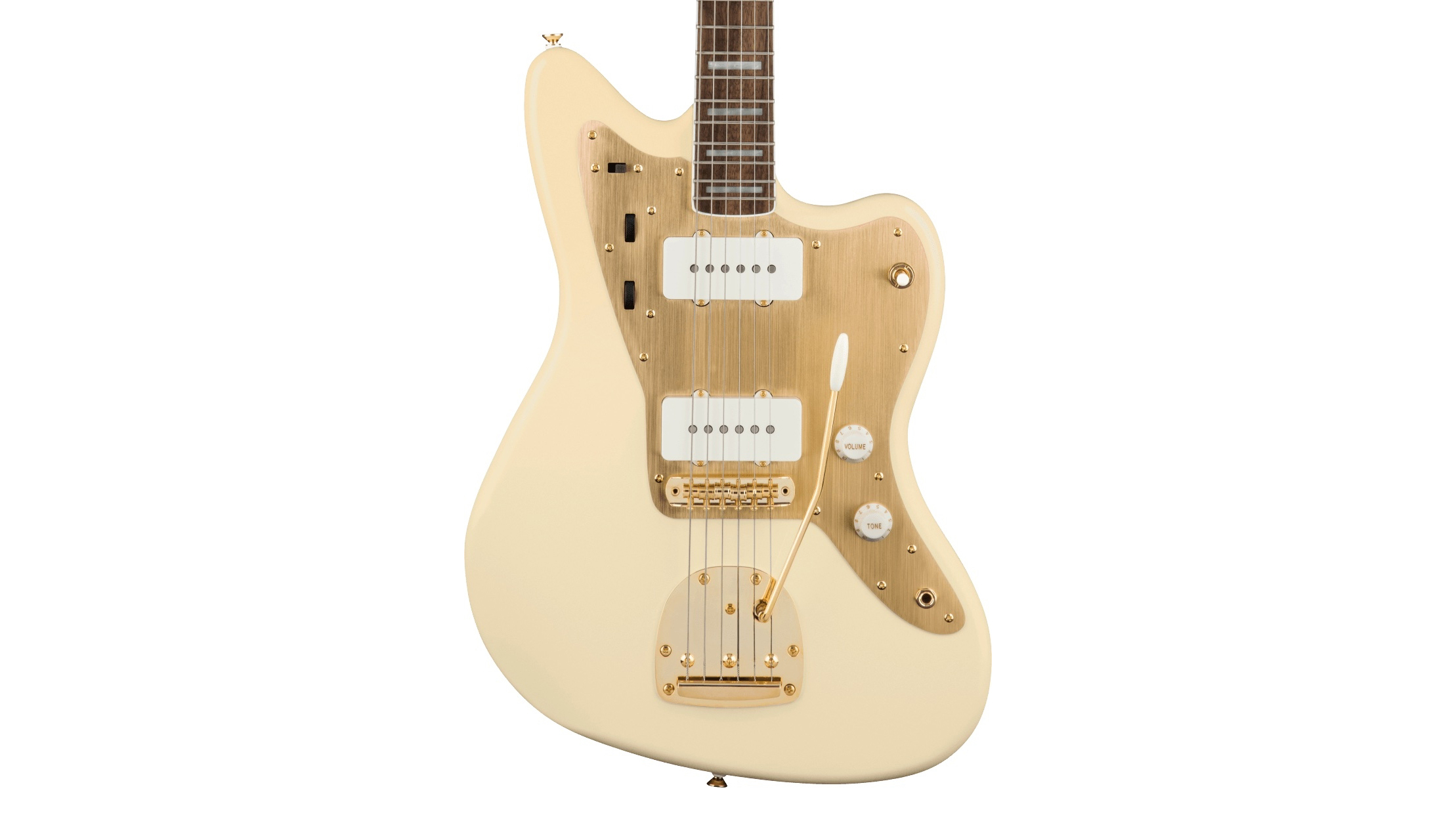MusicRadar Verdict
A genuinely unique guitar that comes as a welcome addition to the signature guitar market. Quite unlike anything you could currently get your hands on from a mainstream manufacturer, the Jack Antonoff Princess is an irresistible blend of two hugely lovable models that makes for a truly inspiring playing experience.
Pros
- +
A wholly unique addition to the signature guitar market
- +
Nice blend of vintage Princess and Jazzmaster playability and functionality
- +
Looks gorgeous – will stand out from the crowd
- +
There’s nothing else quite like it on the market
Cons
- -
Some minor visual defects on the test model
- -
Vibrato system won’t be to everyone’s taste
MusicRadar's got your back
Gretsch Electromatic Jack Antonoff Signature CVT Double-Cut: Need to know
Who is Jack Antonoff?
Bleachers frontman, serial Grammy winner, mega-producer, and simply one of the biggest names on the technical side of contemporary music, Jack Antonoff is a star signing for Gretsch. He’s produced Taylor Swift, Sabrina Carpenter, The 1975 and more, and has released a number of albums under the Bleachers moniker, collaborating with Bruce Springsteen along the way. Following boygenius and Portugal. The Man in joining the Gretsch artist family, Antonoff is a very high-profile collaboration for the guitar firm indeed.
What is the Gretsch Princess?
You may be familiar with the double-cut Gretsch Corvette, but the Princess is a bit more of an oddity. It was originally released in the early 60s then underwent some slight tweaks with an aim to appeal to female players, but it was soon discontinued and slipped into obscurity. Antonoff has been playing a vintage Princess as one of his main studio and on-stage instruments for years.

What makes this model so special?
This isn’t just a reissue of the Princess (although that would be nice at some point). This is a revamp, which finds Antonoff masterminding a hybrid design of his two favorite guitars: the Princess and a Fender Jazzmaster. Here, you have the aesthetic appeal of a bygone Gretsch from yesteryear and the functionality of one of the world’s most beloved offsets. It makes for quite the pairing.
So, what are all the switches for?
Want all the hottest music and gear news, reviews, deals, features and more, direct to your inbox? Sign up here.
Essentially, you get the body of a Gretsch Princess with the Rhythm/Lead switching of a Fender Jazzmaster, and an added kill switch to boot. In Lead mode, standard controls including a three-way toggle, with master volume and tone parameters are activated.
Then, you have the Rhythm circuit, engaged by the dedicated switch, which brings in the tone and volume roller controls, and offers a wholly different neck pickup tone. The kill switch, as expected, cuts the signal when pressed.
Gretsch Electromatic Jack Antonoff Signature CVT Double-Cut: Specs
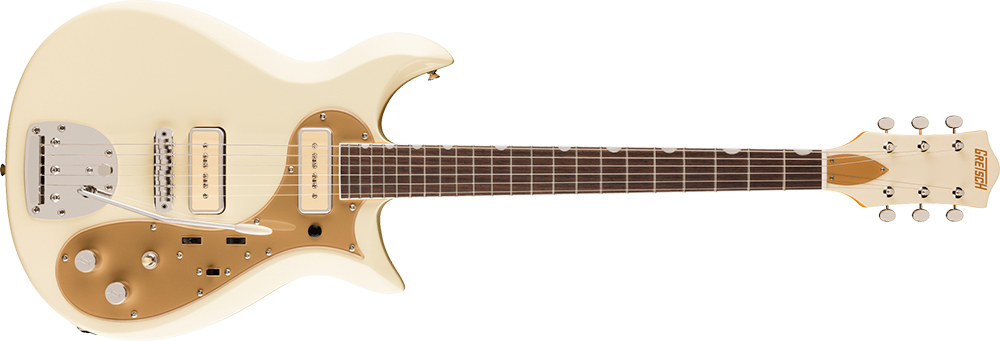
Launch price: £699 / $699 / €799
Made: China
Type: Six-string solidbody signature electric guitar
Body: Alder
Neck: C-shaped maple, satin finish, contoured neck joint, bolt-on
Fingerboard: Rosewood, bound, 7.25” radius, Neo-Classical pearloid thumbnail inlays
Scale length: 25.5” (647.7)
Nut/width: Bone/41.4mm
Frets: 22, medium jumbo
Hardware: Six-saddle floating bridge, vintage-style floating Jazzmaster tremolo w/ tremolo lock button and push-in tremolo arm, vintage-style tuners, G-Arrow control knobs
String spacing at bridge: 52mm
Electrics: Custom FideliSonic P-90 pickups, master volume, master tone, three-position toggle, rhythm/lead switch, rhythm volume, rhythm tone, kill switch
Weight: 7.85lbs/3.56kg
Left-handed options: No
Finish: Vintage White
Case: Not included, Optional G2164 gig bag
Contact: Gretsch
Gretsch Electromatic Jack Antonoff Signature CVT Double-Cut: Build quality
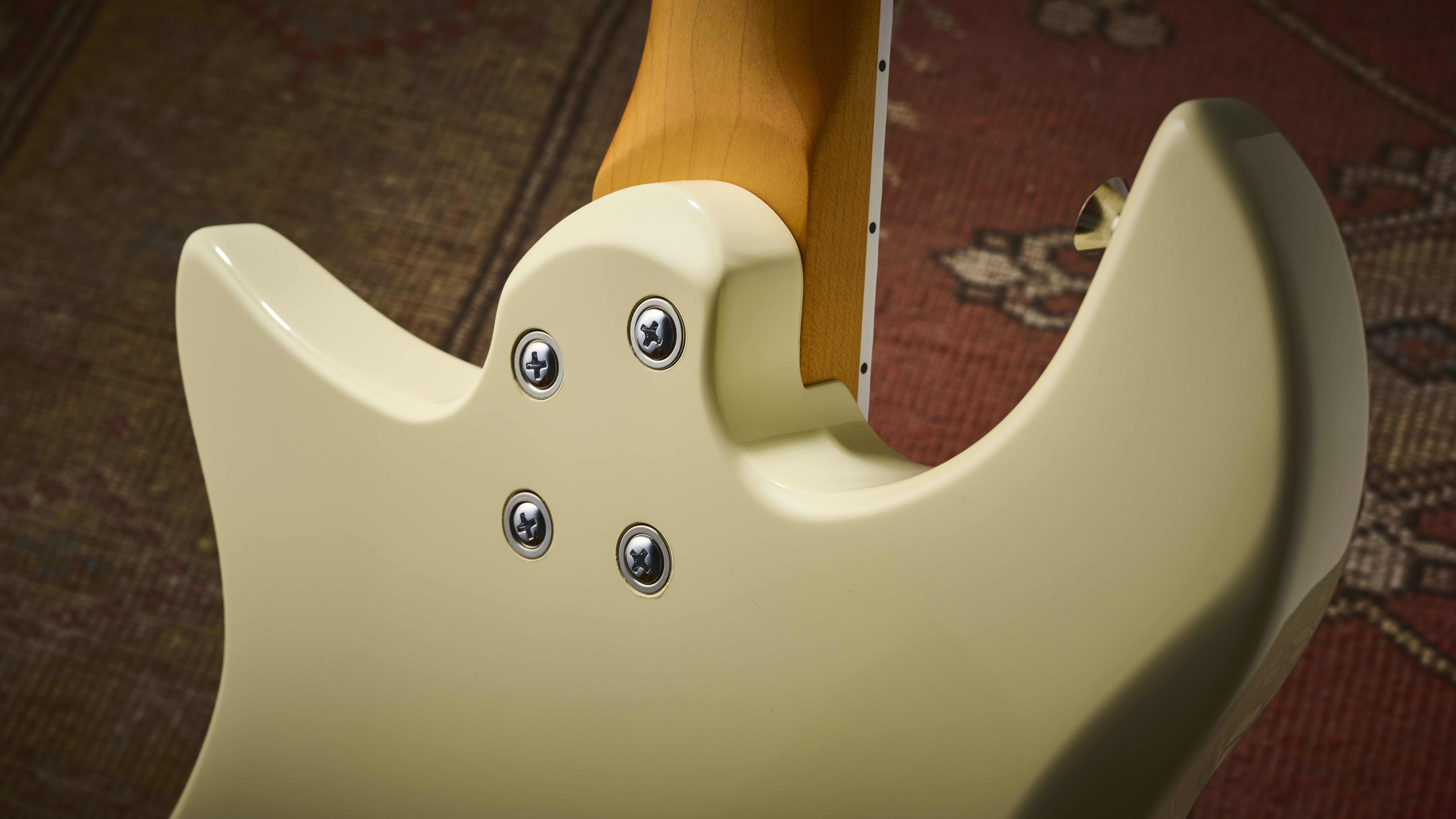
Build quality rating: ★★★★☆
The Gretsch Antonoff Princess heralds from China, but as we’ve seen from similarly priced offshore builds over the past few years, the quality here is really not to be sniffed at. Indeed, newfound reliance on more affordable construction means has (largely) resulted in a bump in overall quality – and we’re pleased to see that’s the case here.

Aside from some unsightly pickguard scratches on our test model, this guitar is very well put together, from its comfortably-contoured neck joint, lightweight body, more-than-decent fretboard treatment, and robust hardware.
Having said that, the toggle switch here was slightly askew, which, while by no means a deal breaker, is a slight frustration. Apart from that, it otherwise cruises through the inspection, having arrived perfectly setup for immediate playing.
Gretsch Electromatic Jack Antonoff Signature CVT Double-Cut: Playability

Playability rating: ★★★★☆
The switching can seem a bit overkill at times, but it’s there if you need it
There’s something really refreshing about the way this guitar feels, and it’s worth commending Gretsch and Antonoff for what they’ve done here: they’ve brought back a vintage gem and given it a very unique twist.
Some of the revamping comes with a few occupational hazards. The decision to cram all the switches on the lower bout means it feels a tad overcrowded, and switching doesn’t feel overly intuitive. This control positioning also gives way to an unsightly constellation of screws, and I can’t help but feel a more streamlined circuit and a cleaner look may have been better.

Because of its hybrid lineage, it also has a Jazzmaster tremolo, which, although largely cooperative, is notorious for being rather unstable at times. That, and the pop-in tremolo arm just didn’t do it for me. Still, it’s what Antonoff asked for, and as a pick-up-and-play-er, it's effortless to get around. The neck feels familiar and fast, and it's nice and lightweight when played both standing and sitting.
Gretsch Electromatic Jack Antonoff Signature CVT Double-Cut: Sounds

Sounds rating: ★★★★☆
Sounds come by way of two Custom FideliSonic P-90s, which are wired to the Rhythm circuit of a Jazzmaster, master volume and tone controls, and a three-way pickup switch. The pups themselves are very nice – plenty of bright sparkle and growly bite from the off, but can lean into some darker territory if fed a bit more gain.
The switching can seem a bit overkill at times, but it’s there if you need it. When in the Rhythm mode, the guitar bypasses the regular controls, defaults to the neck pickup, and engages two roller volume and tone parameters.
The Lead mode, meanwhile, brings the knobs and toggle into play. It’s worth noting the Rhythm mode is different from manually slapping it into the neck position: it’s darker, a bit woolier, and pumps low-end frequencies for a thicker tone. Ideal for… well, rhythm sounds.
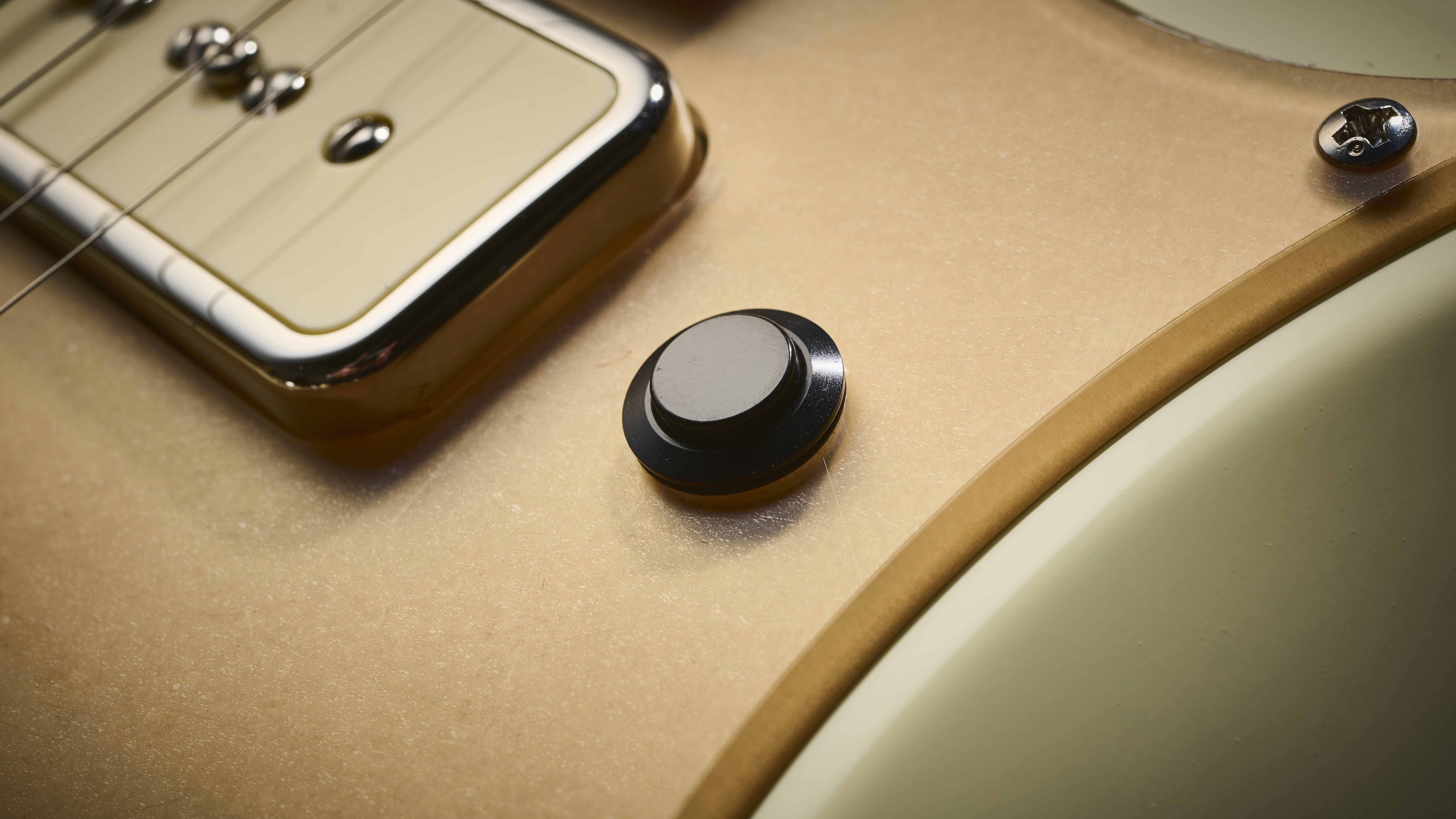
All in all, it’s a nice way of trying to get a bit more functionality out of the guitar but, as mentioned above, such a circuit seems a bit OTT and isn't that intuitive. And we haven’t even mentioned the (perfectly operational) kill switch yet, which throws another yet control onto the pickguard.
I had the most joy when locked into place in a single tone, but that’s just my preference. I also found myself almost exclusively in the Lead circuit out of choice, using the guitar as standard. That, of course, left a lot of unused controls sitting around.
To its credit though, the Antonoff Princess has made a good effort in delivering a swathe of highly usable tones, and those more accustomed to Jazzmasters may not have such qualms. It helps that the pickups are absolutely stellar, meaning it's not hard to dial in exceptional tones.
Gretsch Electromatic Jack Antonoff Signature CVT Double-Cut: Verdict

It’s not just a stock Gretsch with Jack’s signature, it’s a careful revamp of an oddball model
Such is his reputation, Jack Antonoff’s signature was only ever going to be one thing: different to anything else currently on the market. That’s where this thing really shines. It’s not just a stock Gretsch with Jack’s signature, it’s a careful revamp of an oddball model that, quite frankly, deserves more love. At times, it seems that Antonoff and Gretsch have tried to do a little too much, but when you remember the objective was literally to Frankenstein a Princess with a Jazzmaster, it’s hard to admit they haven’t nailed the design brief.
MusicRadar verdict: It’s easily Gretsch’s standout release of the year, and judging by the reception it's had, it could make for one of 2024’s best-selling signatures. It helps that it’s not just a pretty face, too: along with those gorgeous looks you get some exceptional tones and very solid playability at an achievable price point.
| Test | Results | Score |
|---|---|---|
| Build quality | A couple of cosmetic issues on our model, but mostly good | ★★★★☆ |
| Playability | The vibrato could divide opinion, but a lovely player out the box | ★★★★☆ |
| Sounds | A lot of options at your fingertips | ★★★★ 1/2 |
| Overall | A fresh approach to vintage revival from Gretsch and Antonoff | ★★★★☆ |
Gretsch Electromatic Jack Antonoff Signature CVT Double-Cut: Also try
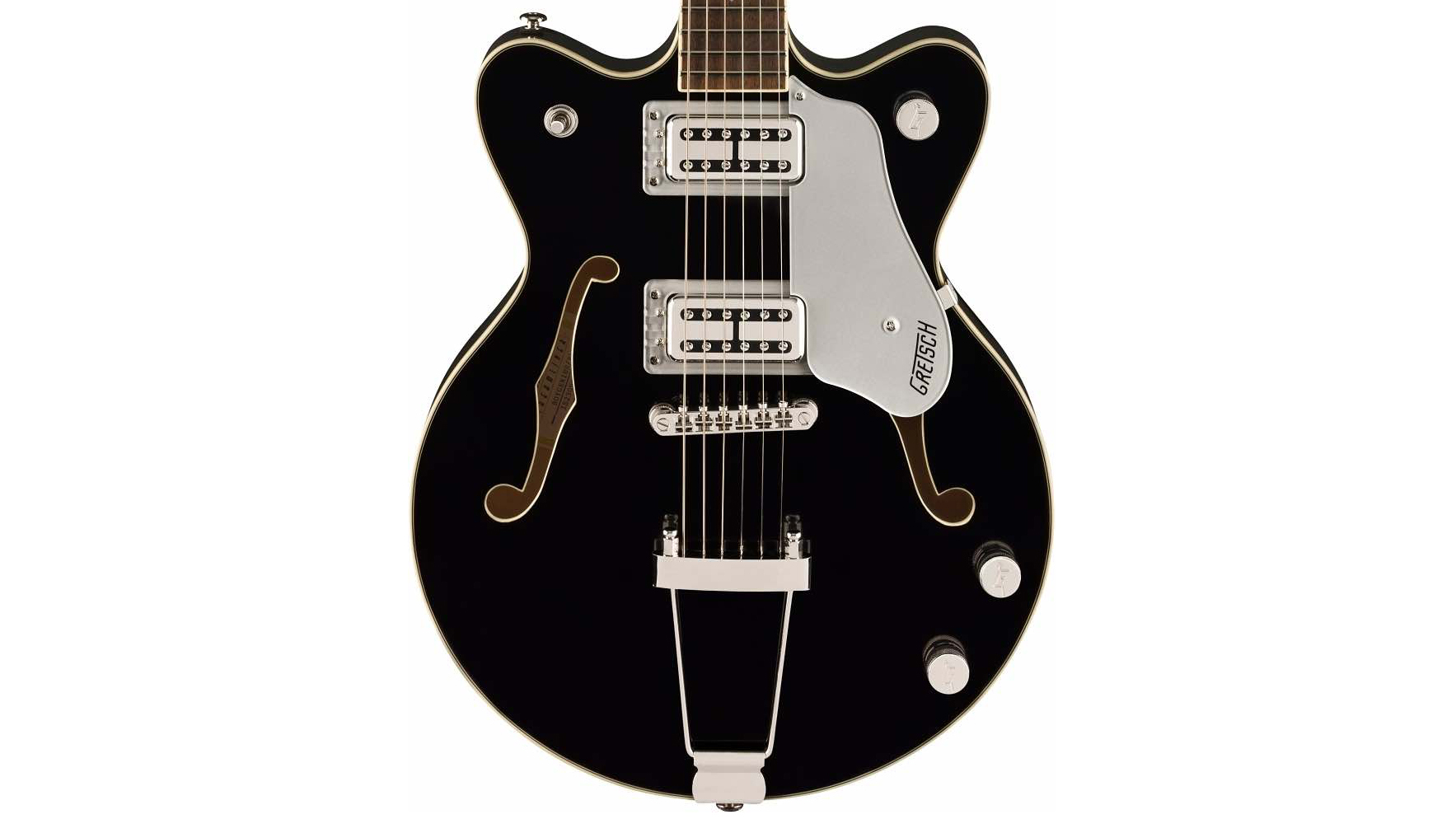
$699/£650
Another one of Gretsch's stand-out signatures from the year that will cater to more traditional Gretsch fans – but good luck finding this very limited edition.
Gretsch Electromatic Jack Antonoff Signature CVT Double-Cut: Hands-on videos
Gretsch

Lark Guitars

Matt is a Senior Staff Writer currently writing for Guitar World and MusicRadar. Before joining the team, he studied for an undergraduate degree in history, received a Masters in the guitar, and spent time performing and recording for a number of UK-based artists. Now, he combines his passion for writing and guitars into his day job, and gigs with indie folk rock duo Esme Emerson on the side.

